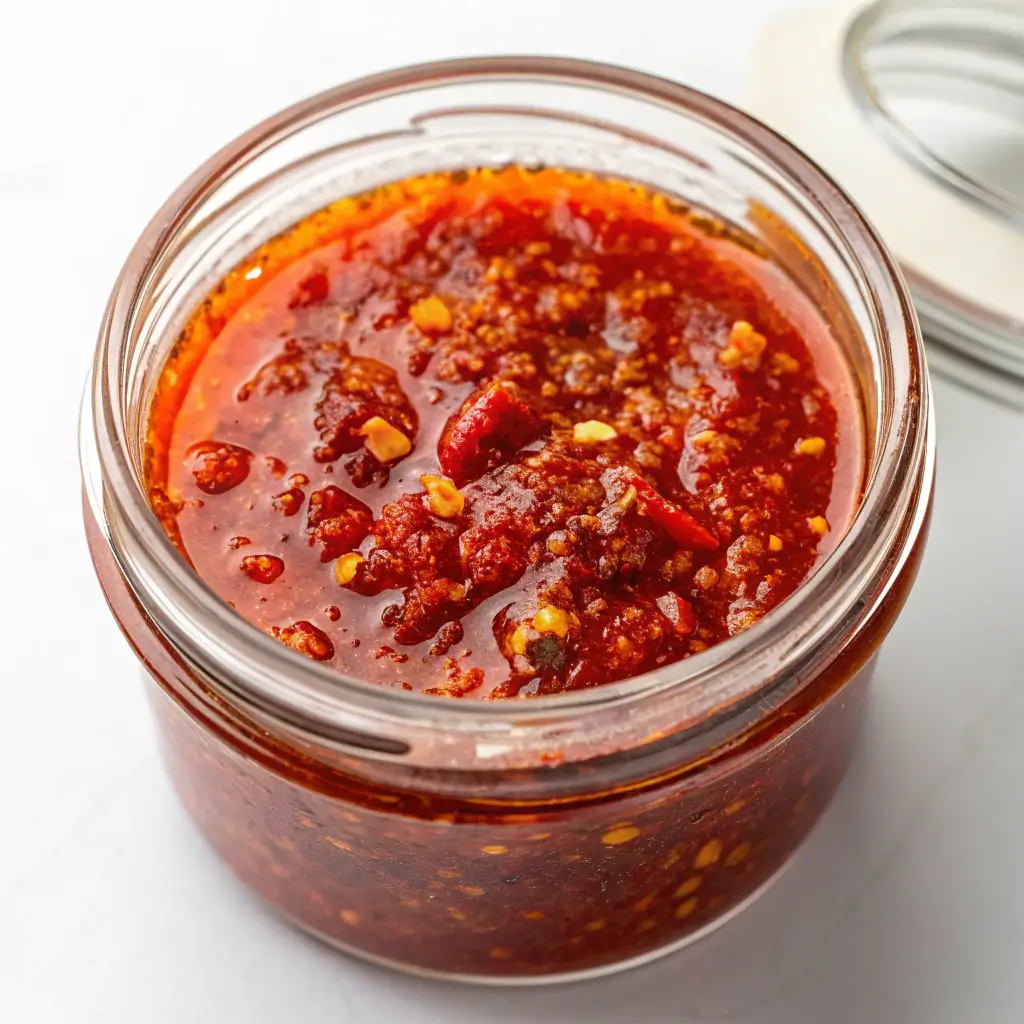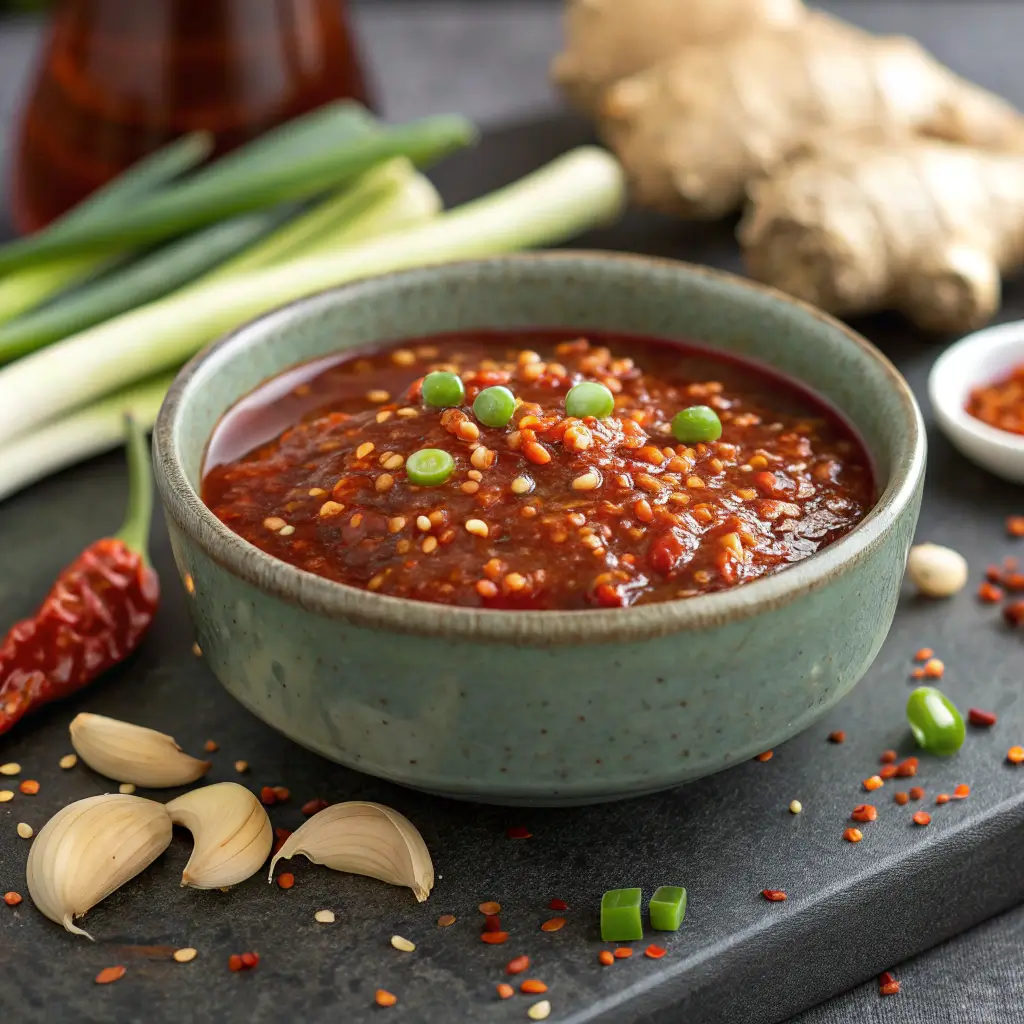Homemade Spicy Red Korean Sauce: Your Ultimate Guide to the Perfect Gochujang Base
Craving the addictive, complex heat of your favorite Korean BBQ, bibimbap, or tteokbokki? That unmistakable flavor comes from one magical source: a well-crafted Spicy Red Korean Sauce. This versatile condiment is the fiery heart of Korean cuisine, balancing sweet, savory, umami, and spicy notes in one glorious, crimson-hued blend. Our easy, chef-approved recipe demystifies this iconic sauce, allowing you to create authentic, restaurant-quality flavors right in your own kitchen. Forget store-bought bottles with endless preservatives; this guide will show you how to whip up a customizable, crowd-pleasing sauce in under 10 minutes. Get ready to elevate your grilling, marinating, and dipping game to incredible new heights.

A Taste of History: The Soul of Korean Cuisine
While our specific recipe is a modern adaptation for home cooks, its soul is gochujang (고추장), a fermented chili paste that is one of the essential pillars of Korean cooking.
Gochujang’s history dates back to the 18th century after chili peppers were introduced to Korea via Japanese invasions or Portuguese traders. Koreans mastered the art of fermenting red chili powder with meju (soybean block) powder, glutinous rice, and salt in large earthen pots called onggi.
This slow fermentation process, often lasting years, develops a deep, funky, sweet, and spicy flavor profile that is utterly unique. Our sauce recipe builds upon this ancient foundation by blending traditional gochujang with other pantry staples to create a ready-to-use, perfectly balanced condiment that honors its rich culinary heritage.
Why You’ll Love This Recipe
· Unbelievably Quick & Easy: This is a no-cook, one-bowl recipe. Simply measure, whisk, and enjoy. It comes together in about 5 minutes!
· Endlessly Versatile: Use it as a marinade for meats, a dressing for bowls, a dipping sauce for dumplings, or a glaze for veggies. It’s your new kitchen superhero.
· Fully Customizable: You control the heat, sweetness, and thickness. Make it mild for the kids or blow-your-socks-off spicy. It’s all up to you.
· Healthier & Fresher: By making it at home, you avoid the corn syrup, preservatives, and artificial flavors found in many store-bought versions.
Ingredients & Equipment
For the Spicy Red Korean Sauce:
– ½ cup (135g) Gochujang Paste: This is the non-negotiable star ingredient. Find it in the Asian aisle of most supermarkets, in a red plastic tub or jar.
– ¼ cup (60ml) Soy Sauce: Provides the salty, umami backbone. Use tamari for a gluten-free option.
– 3 tbsp (45ml) Rice Vinegar: Adds essential tang and brightness to cut through the richness.
– 2 tbsp (30ml) Toasted Sesame Oil: Imparts a deep, nutty aroma and flavor.
– 2 tbsp (30ml) Honey or Maple Syrup: For balancing sweetness. Agave nectar also works well.
– 4 cloves Garlic, finely minced: Fresh is best for that potent, aromatic kick.
– 1 tbsp (8g) Fresh Ginger, grated: Adds a warm, zesty note.
– 2 tbsp (30ml) Water: To thin the sauce to your desired consistency. Adjust as needed.
Pro Tips & Substitutions:
· Spice Level: Gochujang is moderately spicy. For extra heat, add 1-2 teaspoons of gochugaru (Korean chili flakes) or a splash of Sriracha. For a milder sauce, add a tablespoon of water or neutral oil to dilute it.
· Sweeteners: Brown sugar, white sugar, or even Coca-Cola (a Korean BBQ secret!) can be used in place of honey. For sugar-free, use a erythritol-based sweetener.
· Allium Alternatives: No fresh garlic or ginger? 1 teaspoon of garlic powder and ½ teaspoon of ginger powder can work in a pinch, though fresh is highly preferred.
Equipment:
- Medium Mixing Bowl
- Whisk or Fork
- Measuring Spoons and Cups
- Microplane or Fine Grater (for the ginger)
- Airtight Jar or Bottle for storage
Step-by-Step Instructions
1. Combining the Base
In your medium mixing bowl, add the ½ cup of gochujang paste. Gochujang is quite thick, so using a whisk or fork will help break it up. Add the ¼ cup of soy sauce and 3 tablespoons of rice vinegar. Whisk vigorously until the gochujang has completely dissolved and the mixture is smooth and free of lumps.
2. Building Flavor and Sweetness
To the smooth base, add the 2 tablespoons of honey, 2 tablespoons of sesame oil, finely minced garlic, and grated ginger. Whisk again until everything is fully incorporated and the sauce is uniform. At this stage, it will be quite thick and potent.
3. Reaching the Perfect Consistency
Begin whisking in the 2 tablespoons of water, one tablespoon at a time. This step is crucial for achieving a pourable, dippable, or marinade-ready consistency. Pro Tip: The sauce will thicken slightly as it sits. If you plan to use it as a glaze, keep it thicker. For a dressing, add another tablespoon of water or vinegar until it flows easily off a spoon.
4. Taste and Adjust (The Most Important Step!)
Dip a spoon in and taste your creation. This is your chance to make it perfect for your palate.
· Need more salt? Add a splash more soy sauce.
· Not sweet enough? Drizzle in a bit more honey.
· Not tangy? Another splash of rice vinegar will do the trick.
· Too spicy? Balance it with more sweetener and a tiny bit of neutral oil.
Once adjusted, your sauce is ready to use immediately! For the best flavor, let it rest for at least 15 minutes to allow the flavors to meld.
Expert Tips & Troubleshooting
· My sauce is too thick! Simply whisk in more water, one teaspoon at a time, until it reaches your desired consistency.
· My sauce is too thin! Whisk in a bit more gochujang paste. If you don’t want to alter the flavor, a tiny pinch of cornstarch slurry (cornstarch mixed with cold water) can be whisked in and gently heated to thicken it.
· Avoiding Lumps: Ensure your gochujang is at room temperature. Whisking the soy sauce and vinegar into the paste before adding other ingredients is the best way to prevent a lumpy sauce.
· For Maximum Flavor: Make the sauce a day ahead. Storing it overnight in the fridge allows the garlic and ginger to fully infuse their flavors throughout the sauce.
Variations & Customizations
· Korean BBQ Marinade: Double the recipe and add a pureed Asian pear or apple to tenderize meat. Perfect for galbi (short ribs) or bulgogi.
· Creamy Gochujang Sauce: Excellent for salads or drizzling over bowls. Whisk in ¼ cup of mayonnaise or Greek yogurt.
· Fiery Tteokbokki Sauce: Use this sauce as a base for Korean rice cakes. Simmer it in a pan with 1 cup of anchovy or vegetable broth until slightly reduced and thickened.
· Fruity & Sweet Twist: Add 1-2 tablespoons of pureed strawberries or peaches for a unique, sweet-heat profile that’s amazing on grilled chicken or fish.
Serving & Presentation Ideas
The possibilities are truly endless! Here’s how to use your masterpiece:
· As a Marinade: Slather it on chicken wings, short ribs, pork belly, or tofu and let it marinate for at least 2 hours before grilling or baking.
· As a Dipping Sauce: Serve alongside mandu (dumplings), crispy spring rolls, or sweet potato fries.
As a Dressing: Thin it out with a little more water or vinegar and drizzle over a “bibimbap”-inspired grain bowl with rice, veggies, and a fried egg.
As a Glaze: Brush it on salmon, shrimp, or cauliflower during the last few minutes of cooking for a sticky, caramelized finish.
Garnish: Always finish your dish with a sprinkle of toasted sesame seeds and thinly sliced green onions for color and crunch.

Storage & Make-Ahead Tips
This sauce is an excellent make-ahead condiment. Store it in an airtight container or jar in the refrigerator for up to 2-3 weeks. The garlic and ginger are natural preservatives, and the fermented nature of gochujang gives it a long shelf life. Always use a clean spoon when dipping into the jar to prevent contamination. This sauce does not separate significantly, but give it a good stir or shake before each use.
Frequently Asked Questions (FAQ)
Q: Can I make this sauce without gochujang? A:Unfortunately, no. Gochujang has a unique fermented flavor that is the heart of this sauce. Sriracha or other chili pastes will not provide the same depth. Gochujang is widely available and worth seeking out.
Q: Is gochujang gluten-free? A:Traditional gochujang is often made with barley or wheat, so it is not always gluten-free. However, several brands now offer certified gluten-free gochujang options. Always check the label if you have an intolerance.
Q: My sauce is too spicy! How can I fix it? A:Don’t worry! The easiest way to tame the heat is to double the rest of the recipe except for the gochujang. Add more soy sauce, sesame oil, honey, and water until the spice level is to your liking.
Conclusion
Mastering this Spicy Red Korean Sauce is like unlocking a secret weapon for your culinary repertoire. It’s the key to transforming simple ingredients into explosively flavorful meals that will impress your family and friends. With its perfect balance of sweet, savory, tangy, and spicy, this sauce is guaranteed to become a staple in your fridge. So, grab your whisk and a bowl, and in just five minutes, you’ll be on your way to creating unforgettable Korean-inspired dishes. We’d love to see what you create! Tag us on social media or share your cooking adventures in the comments below. Happy cooking
